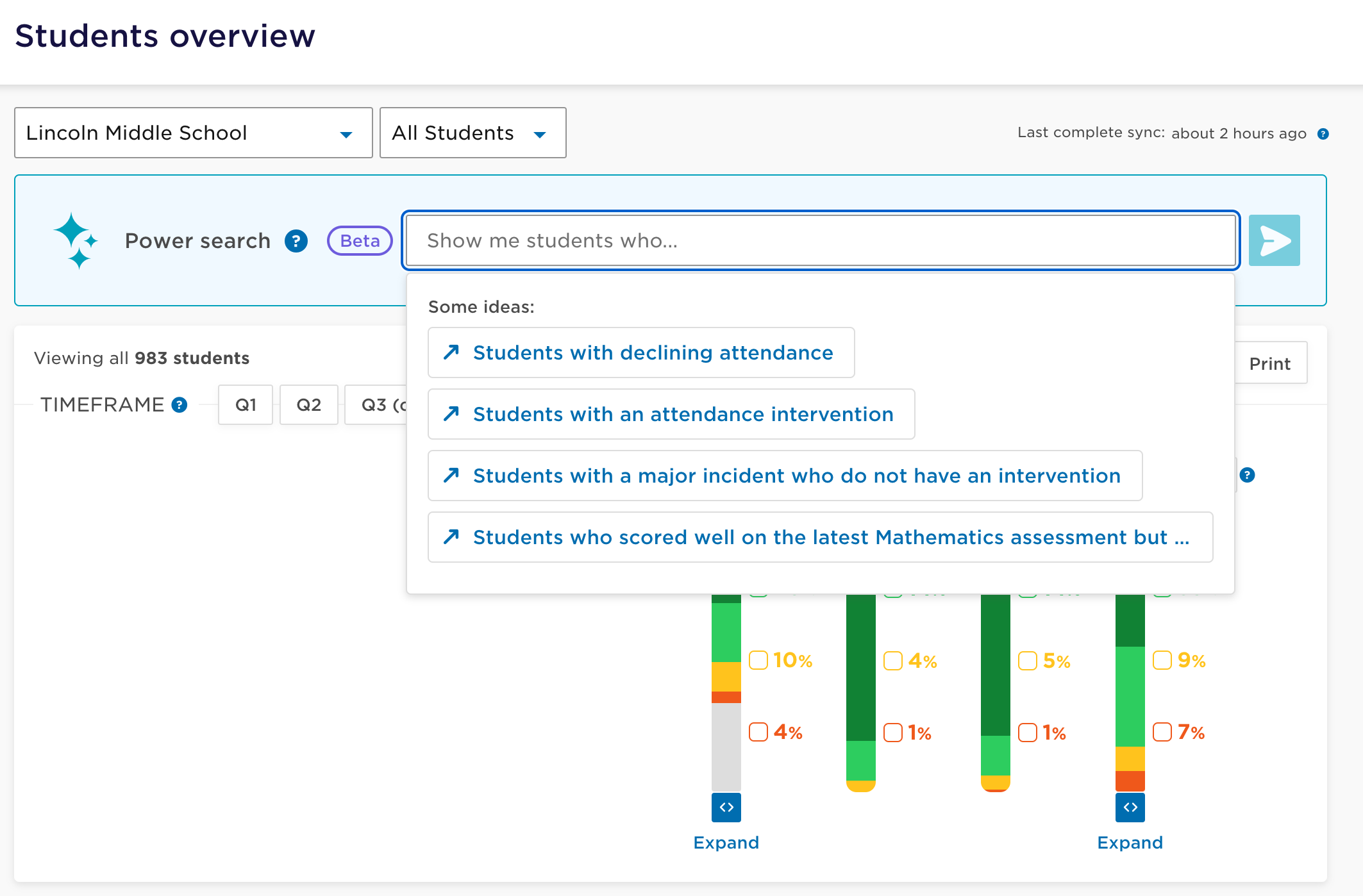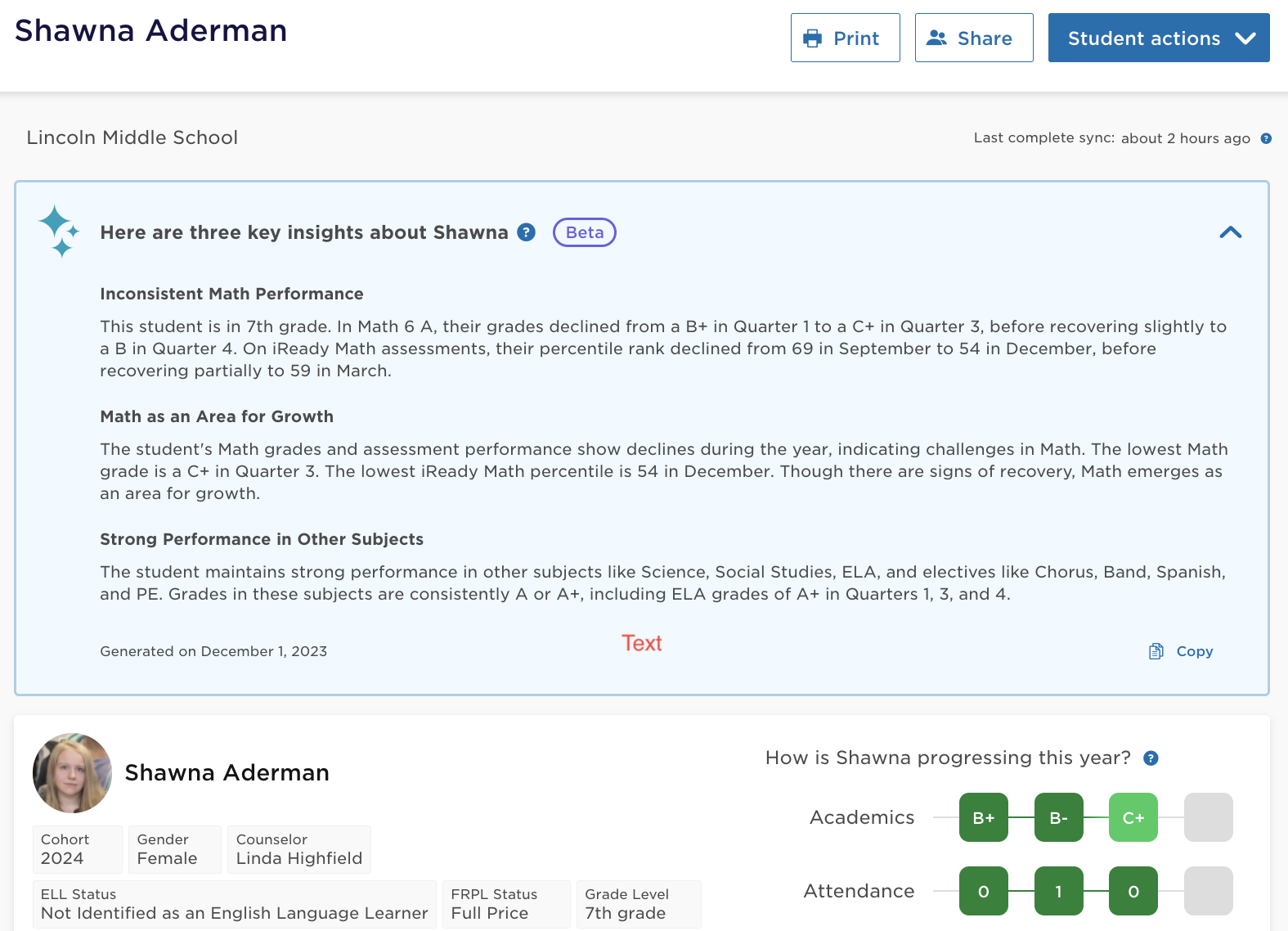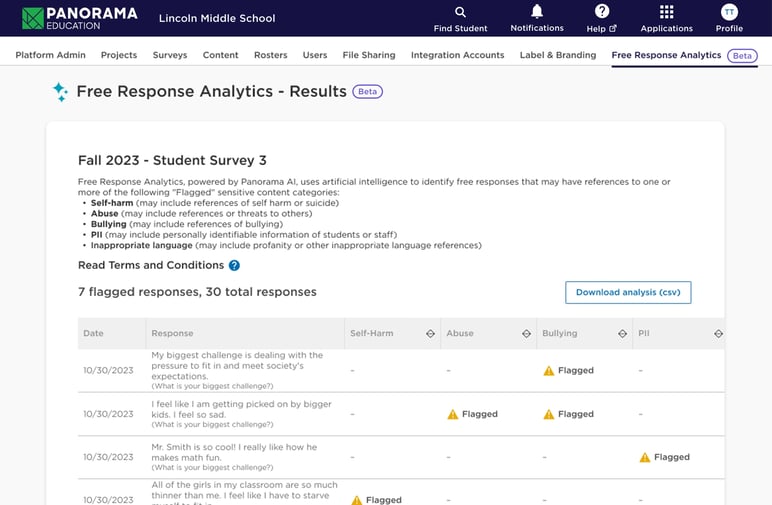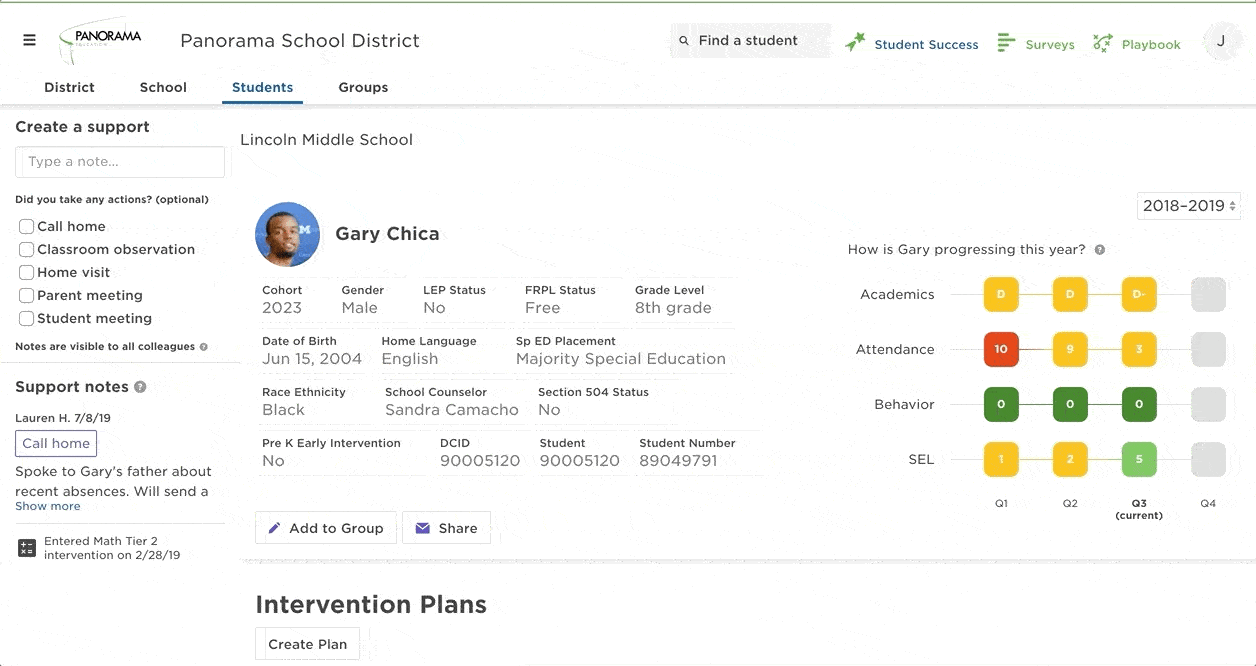In the rapidly evolving landscape of education, Artificial Intelligence (AI) has emerged as a prominent topic, sparking various conversations about its potential impact on teaching and learning. As a school or district leader, you've likely engaged in discussions on AI—and its implications for your teachers, staff, and students. It might feel challenging to navigate these discussions; while AI offers great benefits for schools and districts, it’s also important to address concerns from teachers, staff, and community members.
This blog aims to provide practical insights into the solutions that AI tools offer educators, while giving guidance on implementing these tools effectively. As we explore the potential of AI in education, we'll shed light on opportunities for streamlining work processes, strengthening student support, and paving the way for a more efficient and personalized learning experience.
Download Panorama's AI Toolkit
What is AI and Why Does it Matter For District Leaders?
AI refers to the simulation of human intelligence processes by machines, especially computer systems. Over the last year, conversation around AI has buzzed with terms like ChatGPT, OpenAI, and LLM—leaving many folks both intrigued and overwhelmed.
Schools and districts have not been immune to these conversations. Widespread use of new AI tools means that many schools—and students—have been at the forefront of adopting this transformative technology. From intelligent tutoring systems that offer personalized learning experiences to AI-driven tools for grading assessments and providing instant feedback, schools are exploring the challenges and benefits of implementing AI in the classroom.
And while there are certainly challenges to incorporating AI into education, AI also presents a range of tangible benefits. Implementing AI in schools can be a powerful way to support staff, enhance student learning, and streamline supports.
How Districts Can Use AI to Create Impact
The role of today’s educator is multifaceted, involving the management of a huge array of tasks to ensure positive student outcomes. AI can be a game-changer that empowers educators to effectively navigate this complexity.
Panorama is spearheading the implementation of AI in schools, offering research-backed and secure AI tools for school districts that make analyzing and acting on student data streamlined and highly effective.
Build Capacity & Drive Action
Having the ability to swiftly understand and act upon student data is crucial. Platforms that leverage AI can empower educators to effortlessly identify student trends and patterns. These platforms can transform complex data into actionable insights.
Panorama Focus enables educators to identify student trends or patterns with a simple, plain-language search prompt. Now, teachers and administrators can quickly identify students who need support and allocate resources without wading through dozens of dropdowns or clicking multiple checkboxes.

Panorama Focus (demo data displayed)
Pinpoint Student Challenges
The need to sift through numerous data sources to understand comprehensive student needs is a persistent challenge in education. AI offers a solution, providing district leaders with insights into specific descriptions, challenges, and trends for every student.
Panorama Insights takes a holistic approach, integrating academic, assessment, behavior, attendance, and life-skills data to create a comprehensive view of each student's academic journey. Modeled after evidence-based MTSS processes, it delivers in-depth descriptions of objective, non-debatable challenges and opportunities to help boost the effectiveness of your decisions.

Panorama Insights (demo data displayed)
Identify Urgent Needs
Recognizing and responding promptly to urgent student needs is paramount for district leaders, but the sheer volume of survey and response data can be overwhelming.
Panorama Signal addresses this challenge by rapidly sorting through hundreds of thousands of survey responses, enabling administrators to identify sensitive content swiftly. With AI as a guiding force, districts can proactively address urgent student needs and create a supportive and responsive learning environment.

Panorama Signal (demo data displayed)
Strategies For Supporting District-Wide Implementation of AI in Schools
Adopting AI tools for teachers is an important first step toward enhancing your district’s learning environment. But districts must also support implementation of these tools, ensuring their effective integration into classrooms. District leaders should consider the following strategic approaches that empower educators to use AI tools with fidelity:
1. Professional DevelopmentDistricts can offer targeted training sessions, aimed to equip educators with a deep understanding of AI concepts, the ability to evaluate AI tools, and the confidence to seamlessly incorporate them into both teaching and administrative practices.
2. Continuous Feedback Loop
Implementing a comprehensive system for monitoring and evaluating the effects of AI tools empowers district leaders to make informed decisions. This feedback cycle ensures integration aligns with district goals and enhances overall efficiency. Regular assessments, coupled with feedback from educators, pave the way for data-informed decisions that refine and optimize the use of AI in the district.
3. Collaborative Learning CommunitiesBy fostering an environment where educators can share experiences, best practices, and challenges related to AI integration, districts can tap into the collective wisdom of their teaching staff. Facilitating meaningful dialogue and collaboration among teachers, staff, and principals can happen in:
- Cross-functional teams
- Workshops
- Online forums
Embracing these strategies ensures that districts not only harness the benefits of AI in education, but also foster a culture of continuous improvement and collaboration.
The Future of AI in Education: Where Do We Go From Here?
The implementation of AI tools in schools and districts presents both real challenges and unprecedented opportunities for district leaders. While acknowledging the complexities that AI introduces, it's crucial to recognize the immense potential it holds for transforming teaching and learning.
As we navigate the future of AI in education, districts can lead the way by providing professional development, establishing robust feedback mechanisms, and fostering collaborative learning communities. These strategic approaches not only address the current needs of educators, but also pave the way for ongoing enhancements.
In this dynamic landscape, where challenges and opportunities coexist, the future of AI in education will be shaped by our collective commitment to continuous improvement and collaboration. By staying informed, adapting to change, and embracing the transformative potential of AI, educators can pave the path forward, ensuring a future where technology complements and enriches the educational experience for all.
Download Resources to Support AI Implementation in Your District







-2.png)